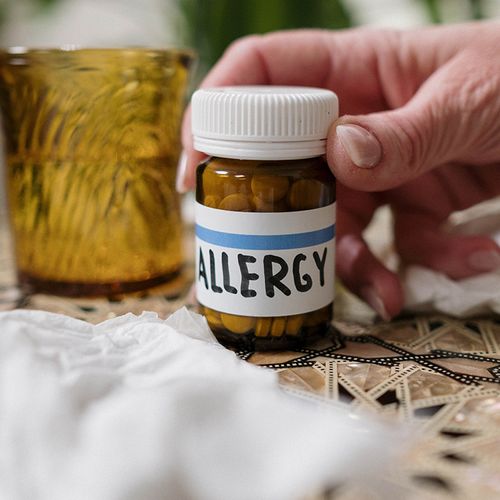If you are like many of the 40 million Americans who suffer from seasonal allergies, you love puttering in the yard but hate the way plant pollens and molds make your eyes water and nose run. Antihistamines and symptom-easing supplements only help to a certain degree, but there's more help on the horizon-low allergy landscaping.
Key: Various factors including a plant's appearance, provenance, pollination method, even its sex-affect how allergenic it is. So the idea is to fill your yard with the types of plants least likely to trigger symptoms, according to Mary L. Jelks, MD, author of Allergy Plants that Cause Sneezing and Wheezing and a clinical assistant professor of medicine in the department of allergy and immunology at the University of South Florida in Tampa. Smart landscaping choices for the allergy-prone include…
- Trees with showy leaves or year-round greenery rather than profuse blossoms. Trees that bloom plentifully and for long periods tend to disperse more pollen...in contrast, eye-catching leaves and evergreens look lovely without sending your yard's pollen count sky-high.
Good tree choices: Apple, cherry, larch, plum and red maple (which are deciduous).. and hemlock, pine and spruce (which are evergreens).
Avoid: Aspen, birch, elm, hickory, mulberry, oak, olive, pecan, sycamore, walnut.
- Female cultivars. Some plant species are separate-sexed (dioecious). In the nursery, you may have seen plants labeled fruitless or seedless, terms that often indicate male plants. Some people like male plants because they don't produce any messy seeds, fruits or flowers—but because they do produce pollen, they are not good choices for allergy patients, Dr. Jelks cautioned.
Better: Opt for the pollen-free female cultivars if you want your yard to include ash, box elder, cottonwood, date palm, poplar or willow.
- Brightly hued flowers and blooming bushes. Colorful blooms generally are the type that attract butterflies and bees for pollinationand these plants also tend to have large, heavy pollen deeply embedded in the flowers rather than lightweight pollen that's easily dispersed into the air and into your airways).
Consider: Azalea, begonia, bougainvillea, columbine, crape myrtle, daffodil, dahlia, daisy, geranium, iris, pansy, peony, periwinkle, petunia, phlox, ranunculus, salvia, snapdragon, sunflower, tulip, verbena, zinnia.
- Native plants. Indigenous species are more disease-resistant-and, as Dr. Jelks explained, healthy plants are less vulnerable to allergy-promoting infestations of mildew, rust and black spot.
Resource: To find plants native to your region, check the Web site of the Lady Bird Johnson Wildflower Center at the University of Texas at Austin (go to www.wildflower.org and click on native plant information).
New Device for Allergy Emergencies Is Easier to Use Than the EpiPen
The Auvi-Q is shaped like a slim smartphone and offers voice instructions that guide a user through the injection process. Just place the device against the outer thigh, push firmly and the needle injects and retracts automatically. Both the Auvi-Q and the EpiPen are equally effective.
- Grass that has a short pollen season. Some grasses produce pollen for four or more months of the year-for instance, bahia, Bermuda, bluegrass, fescue, redtop and saltgrass. But pollen season is limited to just two or three months for other grasses, such as grama, orchard, timothy and velvet. Pollen season length varies from region to region, so consult a local landscaper to see what would work best for you.
Also: If you are highly sensitive to grasses, Dr. Jelks suggested minimizing grassy areas in favor of stone paths or water features. At the very least, let someone else cut your lawn-although a well-mown lawn produces less pollen than unmown grass, the mowing itself releases pollen and mold spores into the air.
- Mulch that won't mold. Wood chips and shredded wood mulch decompose rapidly, especially in areas where mulch tends to remain damp—and thus are likely to harbor mold spores.
Better: Nonorganic options, such as gravel, crushed granite or rubber chips.
More helpful strategies for allergy-prone gardeners…
- Choose low-risk times for yard work. It's best to garden in the late afternoon, when pollen counts generally are lowest...and when the wind is calm, so pollens are not being blown about. To check local pollen counts, visit the Web site of the American Academy of Allergy, Asthma & Immunology's National Allergy Bureau at www.aaaai.org-and stay indoors when counts soar.
- Wear the right gardening garb. Wear gloves, long sleeves, pants and, if necessary, a mask when you garden to reduce contact with allergens. Designate a pair of shoes just for yard work, and keep them in the garage or mudroom so you don't track allergens into the house. Also, be sure to shower, shampoo and put on clean clothes as soon as possible after coming indoors-otherwise, pollens and molds on your body, hair and clothes may trigger symptoms long after you leave the yard.
